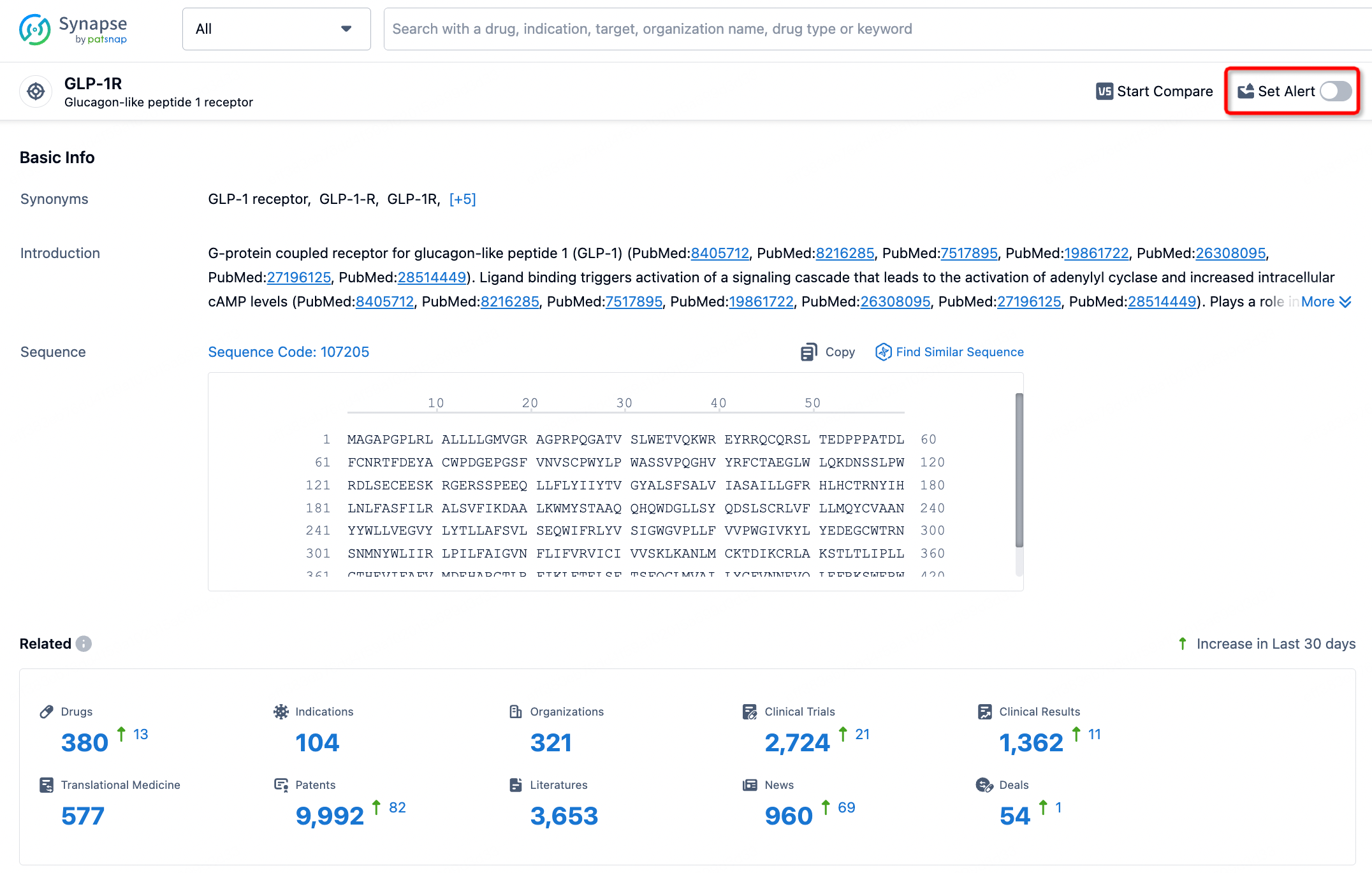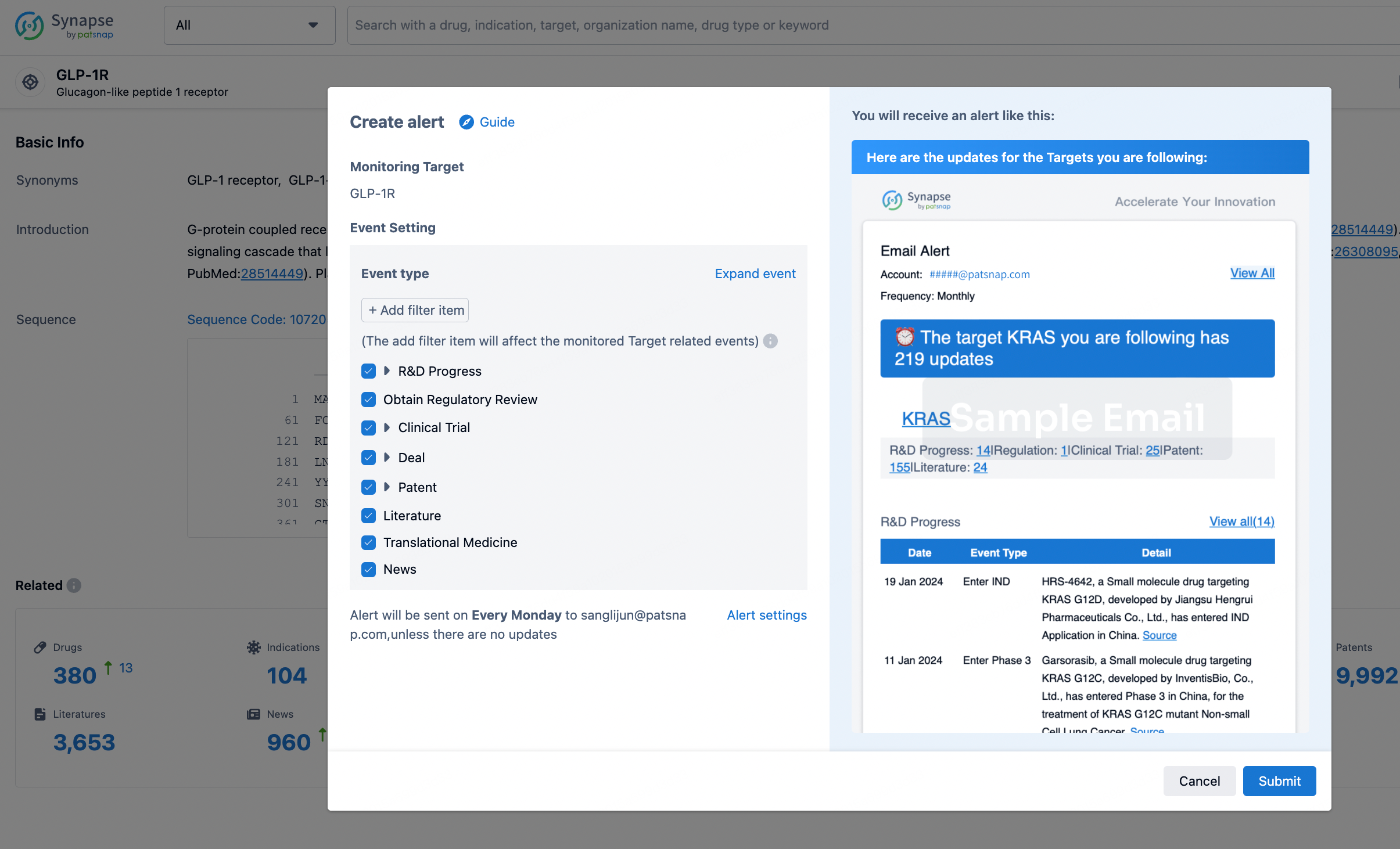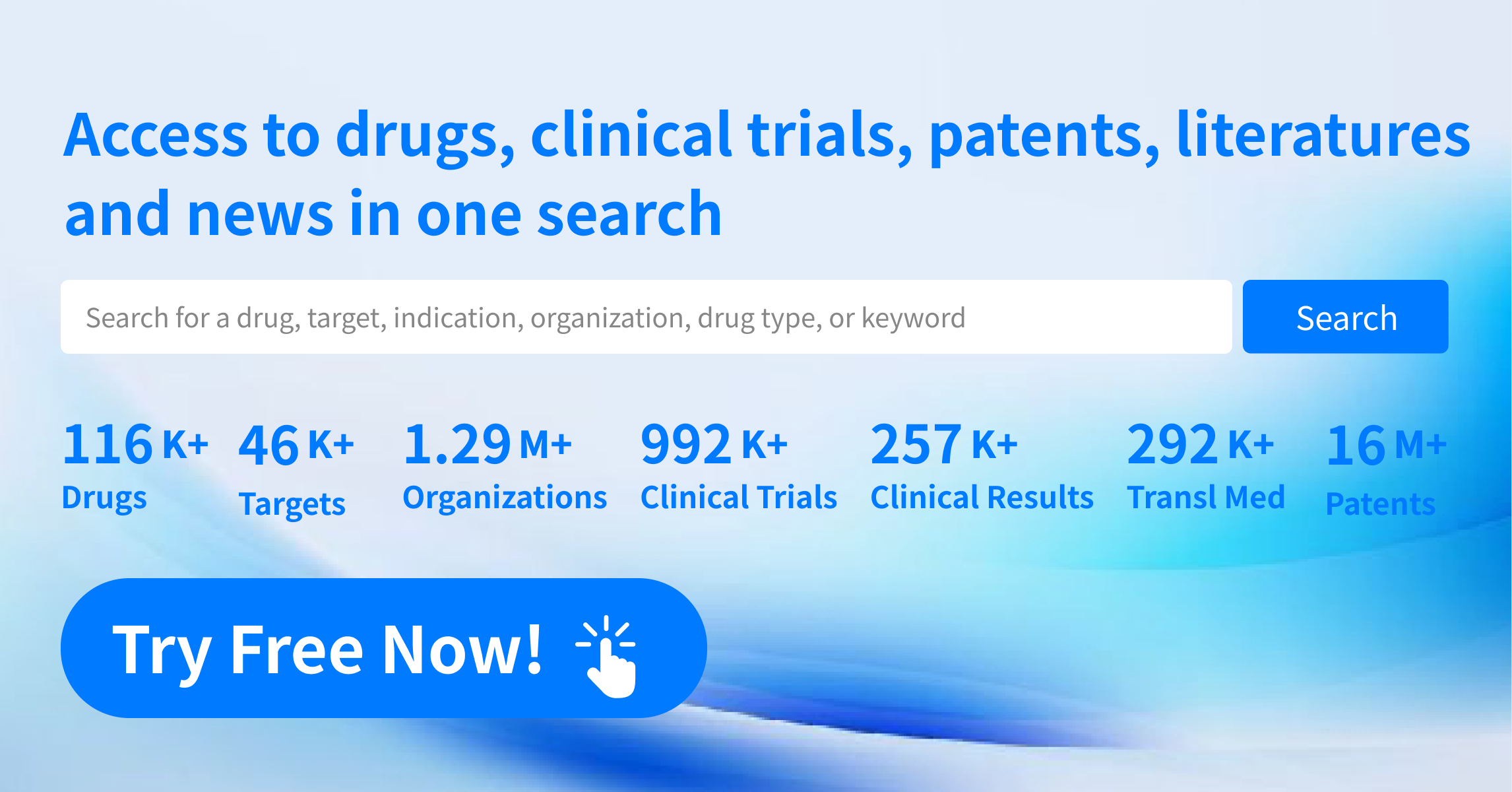Request Demo
What are 5-HT1A receptor agonists and how do they work?
21 June 2024
5-HT1A receptor agonists are a fascinating area of pharmacology and neuroscience, holding significant promise for treating a variety of mental health disorders. These compounds target the 5-HT1A receptor, a subtype of the serotonin receptor, and have been studied extensively for their potential therapeutic benefits. Understanding how these agonists work, their mechanisms of action, and their clinical applications can provide valuable insights into their role in mental health treatment.
5-HT1A receptor agonists work by binding to the 5-HT1A receptors, which are primarily found in the brain regions associated with mood regulation, anxiety, and cognition. Serotonin, a key neurotransmitter in the brain, plays a crucial role in mood stabilization, anxiety, and overall mental well-being. The 5-HT1A receptors are a subset of serotonin receptors that help modulate the release and activity of serotonin in the brain.
When 5-HT1A receptor agonists bind to these receptors, they mimic the action of serotonin, effectively increasing its activity in the brain. This binding action can lead to a cascade of intracellular events that include the inhibition of adenylate cyclase activity, which reduces the conversion of ATP to cAMP. The decrease in cAMP levels ultimately leads to the modulation of various downstream signaling pathways that can influence neurotransmitter release and neuronal excitability.
The action of these agonists can be both presynaptic and postsynaptic. Presynaptically, 5-HT1A receptors are often located on serotonin-producing neurons and act as autoreceptors. When activated, these autoreceptors inhibit the release of serotonin, thus providing a negative feedback mechanism that controls serotonin levels in the synaptic cleft. Postsynaptically, 5-HT1A receptors are found on neurons in various brain regions and modulate the activity of these neurons to produce their therapeutic effects.
5-HT1A receptor agonists have been investigated and utilized for a range of clinical applications, most notably in the treatment of anxiety and depression. One of the most well-known 5-HT1A receptor agonists is buspirone, which is commonly prescribed for generalized anxiety disorder. Unlike traditional benzodiazepines, buspirone does not carry a high risk of dependency or severe withdrawal symptoms, making it a safer alternative for long-term use.
In addition to treating anxiety, 5-HT1A receptor agonists are also explored for their antidepressant effects. Depression is often linked to dysregulation in serotonin levels, and by enhancing serotonin activity through 5-HT1A receptors, these agonists can help alleviate depressive symptoms. Drugs like vilazodone and vortioxetine, which have 5-HT1A receptor agonist properties, are examples of antidepressants that utilize this mechanism to improve mood and cognitive function.
Beyond anxiety and depression, 5-HT1A receptor agonists have shown potential in treating other conditions such as schizophrenia, bipolar disorder, and even neurodegenerative diseases like Alzheimer's. In schizophrenia, for example, these agonists can help address both positive symptoms (like hallucinations and delusions) and negative symptoms (such as social withdrawal and cognitive deficits). By modulating serotonin activity, 5-HT1A receptor agonists can provide a more balanced approach to treating the complex symptomatology of schizophrenia.
Research is also extending into the realm of neuroprotection, where 5-HT1A receptor agonists are being studied for their potential to protect neurons from damage and promote neurogenesis. This is particularly relevant in conditions like Alzheimer's disease, where neuronal loss and cognitive decline are prominent features. By activating 5-HT1A receptors, these agonists may help slow disease progression and improve quality of life for patients.
In conclusion, 5-HT1A receptor agonists are a promising class of compounds with diverse therapeutic applications. Their ability to modulate serotonin activity in the brain makes them valuable tools in treating anxiety, depression, and other mental health disorders. As research continues, the full potential of these agonists in various clinical settings remains an exciting frontier in neuroscience and pharmacology.
5-HT1A receptor agonists work by binding to the 5-HT1A receptors, which are primarily found in the brain regions associated with mood regulation, anxiety, and cognition. Serotonin, a key neurotransmitter in the brain, plays a crucial role in mood stabilization, anxiety, and overall mental well-being. The 5-HT1A receptors are a subset of serotonin receptors that help modulate the release and activity of serotonin in the brain.
When 5-HT1A receptor agonists bind to these receptors, they mimic the action of serotonin, effectively increasing its activity in the brain. This binding action can lead to a cascade of intracellular events that include the inhibition of adenylate cyclase activity, which reduces the conversion of ATP to cAMP. The decrease in cAMP levels ultimately leads to the modulation of various downstream signaling pathways that can influence neurotransmitter release and neuronal excitability.
The action of these agonists can be both presynaptic and postsynaptic. Presynaptically, 5-HT1A receptors are often located on serotonin-producing neurons and act as autoreceptors. When activated, these autoreceptors inhibit the release of serotonin, thus providing a negative feedback mechanism that controls serotonin levels in the synaptic cleft. Postsynaptically, 5-HT1A receptors are found on neurons in various brain regions and modulate the activity of these neurons to produce their therapeutic effects.
5-HT1A receptor agonists have been investigated and utilized for a range of clinical applications, most notably in the treatment of anxiety and depression. One of the most well-known 5-HT1A receptor agonists is buspirone, which is commonly prescribed for generalized anxiety disorder. Unlike traditional benzodiazepines, buspirone does not carry a high risk of dependency or severe withdrawal symptoms, making it a safer alternative for long-term use.
In addition to treating anxiety, 5-HT1A receptor agonists are also explored for their antidepressant effects. Depression is often linked to dysregulation in serotonin levels, and by enhancing serotonin activity through 5-HT1A receptors, these agonists can help alleviate depressive symptoms. Drugs like vilazodone and vortioxetine, which have 5-HT1A receptor agonist properties, are examples of antidepressants that utilize this mechanism to improve mood and cognitive function.
Beyond anxiety and depression, 5-HT1A receptor agonists have shown potential in treating other conditions such as schizophrenia, bipolar disorder, and even neurodegenerative diseases like Alzheimer's. In schizophrenia, for example, these agonists can help address both positive symptoms (like hallucinations and delusions) and negative symptoms (such as social withdrawal and cognitive deficits). By modulating serotonin activity, 5-HT1A receptor agonists can provide a more balanced approach to treating the complex symptomatology of schizophrenia.
Research is also extending into the realm of neuroprotection, where 5-HT1A receptor agonists are being studied for their potential to protect neurons from damage and promote neurogenesis. This is particularly relevant in conditions like Alzheimer's disease, where neuronal loss and cognitive decline are prominent features. By activating 5-HT1A receptors, these agonists may help slow disease progression and improve quality of life for patients.
In conclusion, 5-HT1A receptor agonists are a promising class of compounds with diverse therapeutic applications. Their ability to modulate serotonin activity in the brain makes them valuable tools in treating anxiety, depression, and other mental health disorders. As research continues, the full potential of these agonists in various clinical settings remains an exciting frontier in neuroscience and pharmacology.
How to obtain the latest development progress of all targets?
In the Synapse database, you can stay updated on the latest research and development advances of all targets. This service is accessible anytime and anywhere, with updates available daily or weekly. Use the "Set Alert" function to stay informed. Click on the image below to embark on a brand new journey of drug discovery!
AI Agents Built for Biopharma Breakthroughs
Accelerate discovery. Empower decisions. Transform outcomes.
Get started for free today!
Accelerate Strategic R&D decision making with Synapse, PatSnap’s AI-powered Connected Innovation Intelligence Platform Built for Life Sciences Professionals.
Start your data trial now!
Synapse data is also accessible to external entities via APIs or data packages. Empower better decisions with the latest in pharmaceutical intelligence.


